This is a plot from CST microwave studios of the farfield beam pattern of an antenna. I'm having trouble understanding why the plot isn't single-valued (2nd red circle) and also why there are blue lines. Any help would be much appreciated
3 Answers
Here's how I see it: -
I've extended the blue lines and they form an angle that is 75.8 degrees and coincide with the -3 dB points from a peak magnitude of 7.28 dBi.
I'm having trouble understanding why the plot isn't single-valued (2nd red circle)
I have no idea which 2nd red circle you mean and why you expect something that is single valued.
- 434,556
- 28
- 351
- 777
-
Perhaps the green circle and red farfield pattern appear the same colour to those who are colour blind? – airdas May 22 '19 at 16:16
What type of antenna was this?
My guess would be that the red line is the antenna pattern on one axis.
The green line is probably the pattern on a different axis, it looks a little too uniform for real world data but it depends on the antenna type. I can't think of any other reason to have a circle at around -2dB.
The blue lines seem to be indicating the 3dB points of the antenna beam.
- 6,872
- 19
- 25
-
The green circle is *almost* the gain of the back lobe, so would visually help estimate the directivity, but it's not exactly the back gain, and anyhow, the main beam gain would be the more sensible one to normalise on. – Neil_UK Jan 10 '17 at 15:56
Just from looking at the plot: the light blue lines could be the angle at which the level intersects the 3dB circle (which is not shown in the diagram but you can imagine).
The angle between the light blue lines matches what is written at the right: "angluar width (3dB): 75.8 deg"
I'm not sure what you mean by not beeing "single valued" because actually for each angle there is exactly one intensity value.
Do you mean the fact that there is a second lobe?
That means that the antenna radiates/receives also backwards (i.e. opposite to its main direction) a little bit. Its sensitivity is least at direction 100°, not 180°.
- 16,043
- 34
- 43

